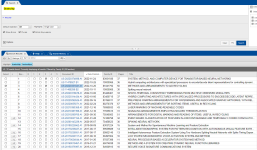This is a positive view of where Brainchip is going in automotive. Mercedes Benz sells around an average of 3 million passenger vehicles and Jerome Nadel places 70 AKIDA chips pre processing sensor inputs before passing on as meta data. If Blind Freddie's mental arithmetic is correct that is 270 million AKIDA smart sensors.
"BrainChip Akida
Mercedes-Benz's EQXX concept car, which debuted at CES earlier this year, uses BrainChip's Akida neuromorphic processor for in-vehicle keyword recognition. Billed as "the most efficient car Mercedes has ever made," the car utilizes neuromorphic technology that consumes less power than a deep learning-based keyword spotting system. That's crucial for a car with a range of 620 miles, or 167 miles more than Mercedes' flagship electric car, the EQS.
Mercedes said at the time that BrainChip's solution was five to 10 times more efficient than traditional voice controls at recognizing the wake word "Hey Mercedes."
Mercedes said, “Although neuromorphic computing is still in its infancy, such systems will soon be on the market within a few years. When applied at scale throughout vehicles, they have the potential to radically reduce the amount of effort required to run the latest AI technologies. power consumption."
BrainChip's CMO Jerome Nadel said: "Mercedes is focused on big issues like battery management and transmission, but every milliwatt counts, and when you think about energy efficiency, even the most basic reasoning, like finding keywords, matters. important."
A typical car could have as many as 70 different sensors by 2022, Nadel said. For cockpit applications, these sensors can enable face detection, gaze assessment, emotion classification, and more.
He said: “From a system architecture perspective, we can do a 1:1 approach where there is a sensor that will do some preprocessing and then the data will be forwarded. The AI will do inference near the sensor...it will Instead of the full array of data from sensors, the inference metadata is passed forward.”
The idea is to minimize the size and complexity of packets sent to AI accelerators, while reducing latency and minimizing power consumption.
Each vehicle will likely have 70 Akida chips or sensors with Akida technology, each of which will be "low-cost parts that won't notice them at all," Nadel said. He noted that attention needs to be paid to the BOM of all these sensors.
BrainChip expects to have its neuromorphic processor next to every sensor on the vehicle
Going forward, Nadel said, neuromorphic processing will also be used in ADAS and autonomous driving systems. This has the potential to reduce the need for other types of power-hungry AI accelerators.
"If every sensor could have Akida configured on one or two nodes, it would do adequate inference, and the data passed would be an order of magnitude less, because that would be inference metadata...that would affect the servers you need," he said. power."
BrainChip's Akida chip accelerates SNNs (spike neural networks) and CNNs (by converting to SNNs). It's not tailored for any specific use case or sensor, so it can be paired with visual sensing for face recognition or people detection, or other audio applications like speaker ID. BrainChip also demonstrated Akida's smell and taste sensors, although it's hard to imagine how these could be used in cars (perhaps to detect air pollution or fuel quality through smell and taste).
Akida is set up to handle SNNs or deep learning CNNs that have been transformed into SNNs. Unlike the native spike network, the transformed CNN preserves some spike-level information, so it may require 2 or 4 bits of computation. However, this approach allows exploiting the properties of CNNs, including their ability to extract features from large datasets. Both types of networks can be updated at the edge using STDP. In the case of Mercedes-Benz, this might mean retraining the network after deployment to discover more or different keywords.
According to Autocar, Mercedes-Benz confirmed that "many innovations" from the EQXX concept car, including "specific components and technologies," will be used in the production model. There's no word yet on whether new Mercedes-Benz models will feature artificial brains."
I do hope you read the whole post and not just the orange text




- (

x1000)
My opinion only DYOR
FF
AKIDA BALLISTA










